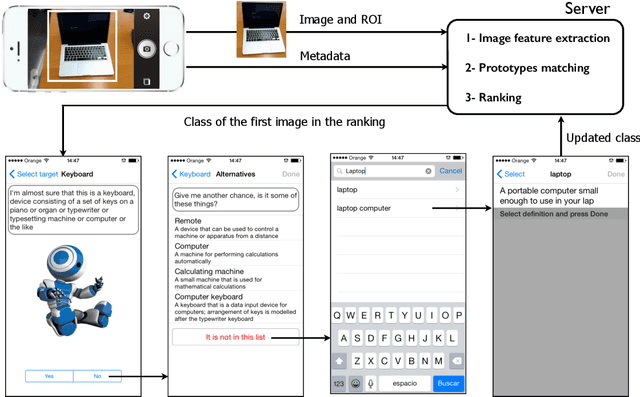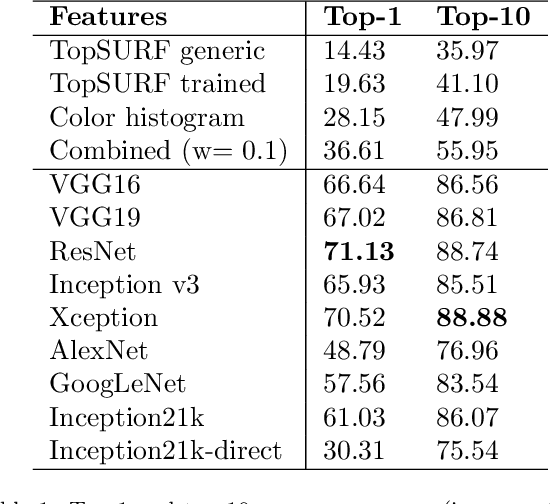Marisa Bernabeu
Multi-Label Logo Recognition and Retrieval based on Weighted Fusion of Neural Features
May 11, 2022



Abstract:Logo classification is a particular case of image classification, since these may contain only text, images, or a combination of both. In this work, we propose a system for the multi-label classification and similarity search of logo images. The method allows obtaining the most similar logos on the basis of their shape, color, business sector, semantics, general characteristics, or a combination of such features established by the user. This is done by employing a set of multi-label networks specialized in certain characteristics of logos. The features extracted from these networks are combined to perform the similarity search according to the search criteria established. Since the text of logos is sometimes irrelevant for the classification, a preprocessing stage is carried out to remove it, thus improving the overall performance. The proposed approach is evaluated using the European Union Trademark (EUTM) dataset, structured with the hierarchical Vienna classification system, which includes a series of metadata with which to index trademarks. We also make a comparison between well known logo topologies and Vienna in order to help designers understand their correspondences. The experimentation carried out attained reliable performance results, both quantitatively and qualitatively, which outperformed the state-of-the-art results. In addition, since the semantics and classification of brands can often be subjective, we also surveyed graphic design students and professionals in order to assess the reliability of the proposed method.
MirBot: A collaborative object recognition system for smartphones using convolutional neural networks
Mar 24, 2018



Abstract:MirBot is a collaborative application for smartphones that allows users to perform object recognition. This app can be used to take a photograph of an object, select the region of interest and obtain the most likely class (dog, chair, etc.) by means of similarity search using features extracted from a convolutional neural network (CNN). The answers provided by the system can be validated by the user so as to improve the results for future queries. All the images are stored together with a series of metadata, thus enabling a multimodal incremental dataset labeled with synset identifiers from the WordNet ontology. This dataset grows continuously thanks to the users' feedback, and is publicly available for research. This work details the MirBot object recognition system, analyzes the statistics gathered after more than four years of usage, describes the image classification methodology, and performs an exhaustive evaluation using handcrafted features, convolutional neural codes and different transfer learning techniques. After comparing various models and transformation methods, the results show that the CNN features maintain the accuracy of MirBot constant over time, despite the increasing number of new classes. The app is freely available at the Apple and Google Play stores.
 Add to Chrome
Add to Chrome Add to Firefox
Add to Firefox Add to Edge
Add to Edge